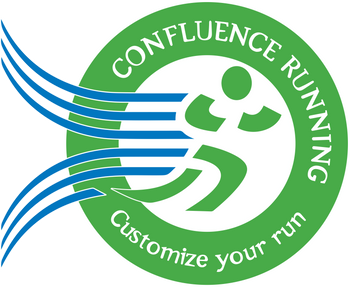Cycling Efficiency for Triathletes: Core Stability & High-Cadence Training for Power and Endurance

2) Triathlon Cycling Workout Breakdown: RPM, Single-Leg Drills, and Tempo Training for Performance & Injury Prevention 🚴🔥
In today’s triathlon training session, we focused on refining cadence control, improving pedal stroke efficiency, and building sustainable cycling power through a structured RPM progression, single-leg drills, and tempo intervals. These training methods directly enhance cycling efficiency, reduce injury risk, and develop endurance for race-day performance.
🔹 Why This Workout Matters
Each segment of this workout is designed to target specific aspects of cycling performance, from neuromuscular coordination to endurance and power output. Here's why these elements are crucial:
1️⃣ Pre-Set: RPM Progression for Leg Speed & Efficiency
- Purpose: Training different cadences at a moderate resistance helps cyclists develop speed control and leg turnover efficiency while maintaining power.
- Why It Works: Maintaining 95-115 RPM at moderate resistance improves the neuromuscular connection between the brain and the legs, allowing athletes to develop smooth and controlled pedal strokes under varying levels of resistance.
- Injury Prevention: Struggling with RPM and forcing high resistance without the ability to maintain form increases the risk of knee and hip strain. This drill allows adjustments to resistance to ensure proper mechanics.
2️⃣ Drill Set: Single-Leg Drills for Balanced Power & Injury Prevention
- Purpose: Single-leg cycling drills help isolate each leg to correct imbalances, prevent dominant-leg compensation, and improve full pedal stroke efficiency.
-
Why It Works:
- The piston-like motion drill reinforces proper tracking of the knee, preventing lateral movement that can strain the joints.
- The smooth stroke drill focuses on eliminating “dead zones” in the pedal stroke, preventing power loss and inefficient energy use.
- The both-leg integration phase ensures the mechanics translate into normal riding.
- Injury Prevention: Many cycling-related injuries, including knee pain and hip instability, stem from poor pedal mechanics and muscle imbalances. Single-leg work strengthens underused stabilizers and corrects asymmetries before they lead to chronic injuries.
3️⃣ Main Set: 2-Minute Tempo Intervals for Sustained Power
- Purpose: High-intensity, sustained efforts at 95-100 RPM improve endurance, strength, and race-day cycling resilience.
-
Why It Works:
- These efforts simulate the sustained power required for triathlon cycling legs.
- Higher cadence tempo rides train fast-twitch fibers for power while maintaining aerobic endurance.
- Practicing at this intensity increases lactate threshold, allowing athletes to sustain higher speeds for longer periods.
- Injury Prevention: Controlled, high-RPM tempo rides train muscles to fire more efficiently, reducing overuse injuries caused by grinding through gears with excessive force.
💡 Key Takeaways for Triathletes
✔️ Cadence control is essential for efficiency and endurance.
✔️ Single-leg drills correct imbalances and prevent injuries.
✔️ Tempo intervals build sustained power and speed for race conditions.
✔️ Core stability enhances efficiency and smooth pedal strokes (as reinforced by today’s medicine ball session).
This structured approach to cycling mechanics and endurance directly translates to better performance on race day. Keep refining your cadence, pedal technique, and power output, and you'll see real gains in your triathlon cycling! 🚴💨🔥
Summary of the Workout for Easy Execution
- Warm-Up: 8-minute easy spin
- Pre-Set: 5 x 1-minute intervals, increasing RPM from 95 to 115 at moderate resistance (adjust resistance as needed for sustainability)
-
Drill Set:
- 2 x 2 minutes (1-minute left leg, 1-minute right leg)
- Focus on piston-like knee motion, then smooth pedal strokes
- 90-second spin with both legs reinforcing both drills
- 2 x 1-minute single-leg drills (left & right), integrating technique
- 90-second spin with both legs
- Main Set: 3 x 2-minute high-intensity efforts at 95-100 RPM with 2-minute recovery between intervals
- Cooldown: 5-minute easy spin
This workout enhances cadence efficiency, strengthens pedal mechanics, and builds endurance, preparing athletes for race-day performance! 🚴🔥

1) Triathlon Training Recap: Cycling RPM & Endurance Workout 🚴♂️🔥
Today's triathlon cycling workout focused on building endurance, refining cadence control, and improving efficiency on the bike. We started with an 8-minute warm-up at a moderate pace, aiming for a heart rate of 120-130 BPM, ensuring a steady start while preparing the body for more intense efforts. The preset included three 1-minute intervals at increased resistance, maintaining an RPM of 90-95, followed by 1-minute recovery periods. This phase primed the legs for the main workout while reinforcing pedal control under resistance.
The drill set and main set combined emphasized cadence control at progressively increasing speeds. We started at 95 RPM and built up to 115 RPM in one-minute intervals, ensuring riders maintained control and smooth pedal strokes at each level. After reaching 115 RPM, we worked our way back down, reinforcing neuromuscular efficiency and fatigue resistance. This structured approach helps triathletes develop faster leg turnover, better endurance, and improved pedaling technique, which translates directly to stronger cycling performance in races. Keep practicing cadence drills to enhance your efficiency and power on the bike! 🚴💨
Want to complete your triathlon training with strength and stability work? 💪🔥 Check out the other half of this workout focusing on medicine ball and bodyweight exercises to build power and endurance! 👉 Triathlon Strength Training: Medicine Ball & Bodyweight Workout for Power & Stability 🚴♂️🏋️♂️
Triathlon Cycling Workout Summary 🚴♂️🔥
🔹 Warm-Up (8 Minutes)
- Moderate pace
- Heart rate target: 120-130 BPM
🔹 Pre-Set (3 x 1-Minute Intervals)
- Increased resistance
- Maintain 90-95 RPM
- 1-minute recovery between intervals
🔹 Drill Set & Main Set (Cadence Focus)
- Maintain high RPM with smooth pedal strokes
-
1-minute intervals at increasing cadence:
- 95 RPM
- 100 RPM
- 105 RPM
- 110 RPM
- 115 RPM
- After reaching 115 RPM, work back down in reverse order
💡 Key Focus Areas
✔️ Cadence control for cycling efficiency
✔️ Heart rate regulation for endurance
✔️ Pedal stroke smoothness to reduce energy waste
✔️ Building leg speed & fatigue resistance
This structured workout improves neuromuscular coordination, endurance, and power, all crucial for triathlon performance. Keep working on maintaining smooth, efficient pedal strokes at various RPMs to enhance overall cycling ability! 🚴💨
Triathlon Cycling: Core Stability & Efficiency on the Bike 🚴♂️💪
One of the most overlooked aspects of cycling efficiency is core control. A strong, stable core allows you to generate more power, maintain aerodynamic positioning, and reduce energy waste while riding. When your core is engaged, your upper body stays stable and relaxed, preventing unnecessary movement that can drain energy and slow you down.
During today's workout, especially in the higher RPM drill set, it was important to keep your core engaged to stay steady at 100+ RPM. As cadence increases, it's natural to let your upper body bounce or sway, but this reduces efficiency and can lead to fatigue. Instead, focus on:
🔹 Core Stability Tips for Cycling Efficiency
✔️ Engage your core—think about lightly pulling your belly button toward your spine.
✔️ Keep your upper body still—minimize unnecessary movement to conserve energy.
✔️ Relax your grip on the handlebars—avoid tension in the shoulders and arms.
✔️ Breathe deeply—using your diaphragm helps stabilize the trunk and maintain control.
✔️ Pedal smoothly—focus on even, circular pedal strokes to maintain efficiency.
The stronger and more stable your core, the more efficiently you’ll transfer power to the pedals without wasting energy through unnecessary movement. Next time you ride, practice maintaining a steady posture and smooth pedal strokes, especially during high-cadence intervals. This will help you ride stronger, longer, and with better control on race day! 🚴🔥
Tags for Cycling Efficiency for Triathlon Training
cycling efficiency, triathlon cycling training, core stability for cyclists, high cadence cycling drills, how to improve cycling endurance, cycling cadence training, best cycling workouts for triathletes, how to pedal efficiently, cycling core strength, maintaining stability on the bike, cycling power and endurance, improve cycling performance, triathlon bike training tips, how to control upper body while cycling, best cadence for cycling, how to ride a bike faster, triathlon race day cycling tips, core exercises for cyclists, cycling technique for triathletes, high RPM cycling workout, triathlon cycling workout, cycling RPM drills, single-leg cycling, tempo interval training, cycling performance, cycling injury prevention, cadence training, cycling endurance, triathlon bike training, indoor cycling drills, improving pedal efficiency, cycling leg strength, cycling core stability, best triathlon workouts, cycling technique drills, triathlon cycling tips, increasing cycling cadence, smooth pedal strokes, cycling injury prevention strategies, structured cycling workout


